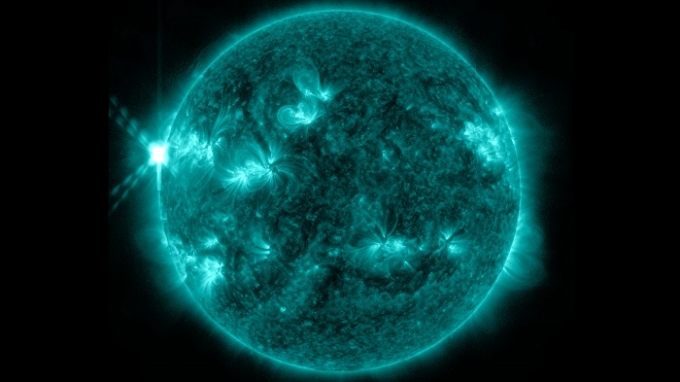Sun Hurls Three X-Class Solar Flares into Space: Biggest of 2013
(Video)

The sun has been busy the past few days. It has now hurled three X-class solar flares into the depths of space, and it's likely that this activity will only increase as it approaches the peak of its 11-year solar cycle.
Solar flares are powerful bursts of radiation that can sling the harmful material through space toward Earth. Fortunately, this radiation cannot pass through our atmosphere to impact humans on the ground. However, it can sometimes disturb the atmosphere enough so that it disrupts radio signals.
Like hurricanes, solar flares are classified based on their intensity. The weakest are known as A-class flares, followed by B, then C and M. The strongest solar flares are labeled X-class flares, and can pose a risk to astronauts and satellites in orbit when aimed directly at Earth. In order to categorize the strength of these flares within their classes, though, researchers also give them numbers. The higher the number, the stronger the flare is.
The first flare that the sun churned out on Mother's Day was a comparatively demure X1.7 flare. No planets were actually in the line of fire for this particular flare, even though it was associated with a coronal mass ejection (CME). This solar phenomenon can send billions of tons of solar particles into space that reach other planetary bodies days after the initial burst. In addition, these CMEs can charge the northern lights, creating spectacular displays a few days after the eruption occurs. In fact, a solar flare that occurred in April did just that, sparking a geomagnetic storm that produced an impressive light show.
The sun wasn't done yet, though. On May 13, it emitted an X2.8-class flare, which peaked at 12:05 p.m. EDT. It was the strongest X-class flare of 2013 at the time, easily surpassing the other X-class flare that occurred just 14 hours earlier. Like the first flare, this second one was also associated with a CME. Fortunately, it wasn't Earth-directed; yet it could still pass NASA's STEREO-B, Messenger and Spitzer spacecraft. Officials may possibly have to put the spacecraft into safe mode in order to protect the instruments from the solar material hurtling away from the sun at a whopping 1,200 miles per second.
The largest and most recent flare that occurred happened on Monday night, according to WTVR. The massive X3.2-class flare hurtled into space, pointing to the fact that the sun is reaching the peak of its activity cycle, according to spaceweather.com.
We shouldn't be all too surprised about this uptick in solar activity, though. NASA's Solar Dynamics Observatory has been increasingly documenting our restless sun's activity. So far, they've caught stunning images of the flares, in addition to live video of the events.
The sun will officially reach the peak of its solar cycle in late 2013. Until then, enjoy the stunning images and video here and below, provided by